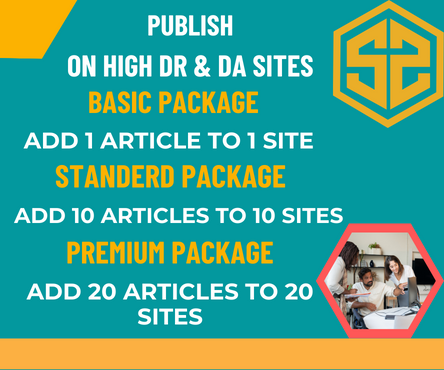3D printing, also known as additive manufacturing, involves creating three-dimensional objects by layering materials based on digital models. The choice of material plays a crucial role in determining the final properties of the printed object, including strength, flexibility, durability, and heat resistance. Below is an overview of the most commonly used materials in 3D printing, categorized by type: For more information please visit afzasaz
1. Thermoplastics
Thermoplastics are the most widely used materials in 3D printing because of their versatility, ease of use, and affordability.
- PLA (Polylactic Acid):
- Characteristics: Biodegradable, derived from renewable resources like corn starch or sugarcane. Easy to print with, low warping, and minimal toxic fumes.
- Applications: Prototyping, educational models, consumer goods.
- Pros: Eco-friendly, low-cost, good for detailed models.
- Cons: Brittle, not heat-resistant.
- ABS (Acrylonitrile Butadiene Styrene):
- Characteristics: Durable, impact-resistant plastic. Requires higher printing temperatures.
- Applications: Functional parts, automotive components, electronics housing.
- Pros: Stronger and more heat-resistant than PLA.
- Cons: Warps easily, produces fumes, requires a heated bed.
- PETG (Polyethylene Terephthalate Glycol-Modified):
- Characteristics: Combines the benefits of PLA and ABS. Tough, flexible, and resistant to water and chemicals.
- Applications: Food containers, mechanical parts.
- Pros: Less warping, good strength and flexibility, food-safe.
- Cons: Can be stringy and sticky during printing.
- Nylon:
- Characteristics: Tough, flexible, and wear-resistant. Absorbs moisture, which can affect print quality.
- Applications: Gears, bearings, and functional mechanical components.
- Pros: Strong, impact-resistant, flexible.
- Cons: Requires high printing temperature and moisture control.
2. Resins
Resins are primarily used in stereolithography (SLA) and digital light processing (DLP) 3D printers. They offer high precision and detail.
- Standard Resin:
- Characteristics: Provides high detail but is generally brittle.
- Applications: Jewelry, dental models, miniatures, prototypes.
- Pros: High accuracy and smooth surface finish.
- Cons: Brittle, less durable.
- Tough Resin:
- Characteristics: Designed for mechanical strength and impact resistance.
- Applications: Functional prototypes, jigs, fixtures.
- Pros: Stronger than standard resin, can handle wear and tear.
- Cons: Still less durable than thermoplastics like ABS or nylon.
- Flexible Resin:
- Characteristics: Soft and flexible, mimics rubber-like properties.
- Applications: Wearable devices, gaskets, soft grips.
- Pros: Flexibility, stretchability.
- Cons: Lower detail resolution compared to rigid resins.
- Castable Resin:
- Characteristics: Specifically formulated for investment casting, burns out cleanly.
- Applications: Jewelry, dental, and metal casting.
- Pros: Perfect for creating molds for metal casting.
- Cons: Not suitable for functional prototypes.
3. Composites
Composite materials in 3D printing are infused with fibers or powders to enhance mechanical properties.
- Carbon Fiber-Reinforced Filament:
- Characteristics: Plastic filament (often PLA or nylon) reinforced with carbon fibers, offering increased stiffness and strength.
- Applications: High-performance functional parts, automotive, aerospace.
- Pros: Lightweight, high strength-to-weight ratio.
- Cons: Abrasive to printer nozzles, more expensive.
- Glass-Filled Filament:
- Characteristics: Filaments infused with glass fibers for added stiffness and durability.
- Applications: Industrial parts, automotive applications.
- Pros: Very strong and durable.
- Cons: Can be brittle, abrasive to printer parts.
- Wood-Filled Filament:
- Characteristics: Mixture of PLA and wood particles, giving the final print a wood-like appearance and texture.
- Applications: Decorative items, architectural models.
- Pros: Aesthetic appeal, easy to sand and stain.
- Cons: Brittle, lower strength than standard filaments.
4. Metals
Metal 3D printing, such as selective laser melting (SLM) or direct metal laser sintering (DMLS), is primarily used for industrial applications where strength and durability are critical.
- Stainless Steel:
- Characteristics: High strength, corrosion-resistant, used for functional prototypes and end-use parts.
- Applications: Aerospace, automotive, medical devices.
- Pros: Strong, durable, and corrosion-resistant.
- Cons: Expensive, requires specialized equipment.
- Titanium:
- Characteristics: Lightweight, biocompatible, and incredibly strong.
- Applications: Aerospace, medical implants, high-performance components.
- Pros: Lightweight, strong, biocompatible.
- Cons: Very expensive, complex to process.
- Aluminum:
- Characteristics: Lightweight and strong, used in industrial and aerospace applications.
- Applications: Automotive parts, machinery.
- Pros: Lightweight, strong, good thermal properties.
- Cons: Requires complex printing techniques, expensive.
- Copper:
- Characteristics: Excellent electrical and thermal conductivity.
- Applications: Electronics, heat exchangers.
- Pros: High conductivity.
- Cons: Challenging to print due to reflectivity.
5. Ceramics
Ceramic 3D printing is used in specialized applications requiring high heat resistance, hardness, and biocompatibility.
- Alumina:
- Characteristics: High heat resistance and mechanical strength.
- Applications: Aerospace, medical implants, dental restorations.
- Pros: Heat-resistant, biocompatible.
- Cons: Expensive, brittle.
- Silica:
- Characteristics: Used primarily for investment casting molds and high-temperature applications.
- Applications: Aerospace, engineering.
- Pros: Good thermal properties.
- Cons: Brittle and difficult to print.
6. Biomaterials
In bioprinting, materials that can interact with biological systems are used, often in the medical field.
- Hydrogels:
- Characteristics: Water-based gels used to mimic soft tissue structures.
- Applications: Tissue engineering, drug delivery.
- Pros: Biocompatible, mimics natural tissues.
- Cons: Limited mechanical strength.
- Bio-Inks:
- Characteristics: Composed of living cells suspended in a solution, used in creating tissues and organs.
- Applications: Organ scaffolding, regenerative medicine.
- Pros: Can support cell growth, potentially revolutionizing medical treatments.
- Cons: Still in experimental stages, complex to print.
7. Specialty Materials
- Conductive Filaments:
- Characteristics: Materials like PLA or ABS infused with conductive particles.
- Applications: Printed electronics, sensors, circuits.
- Pros: Allows 3D printing of electronic components.
- Cons: Not as conductive as metal.
- High-Temperature Plastics (PEEK, ULTEM):
- Characteristics: High-performance plastics that can withstand extreme temperatures and stress.
- Applications: Aerospace, automotive, medical implants.
- Pros: Exceptional heat resistance and strength.
- Cons: Requires high-end 3D printers, expensive.
Conclusion
The choice of 3D printing material depends on the specific requirements of the project, such as strength, flexibility, heat resistance, or biocompatibility. Thermoplastics like PLA and ABS are great for general prototyping, while metals, composites, and specialty materials are suited for advanced industrial and medical applications.
